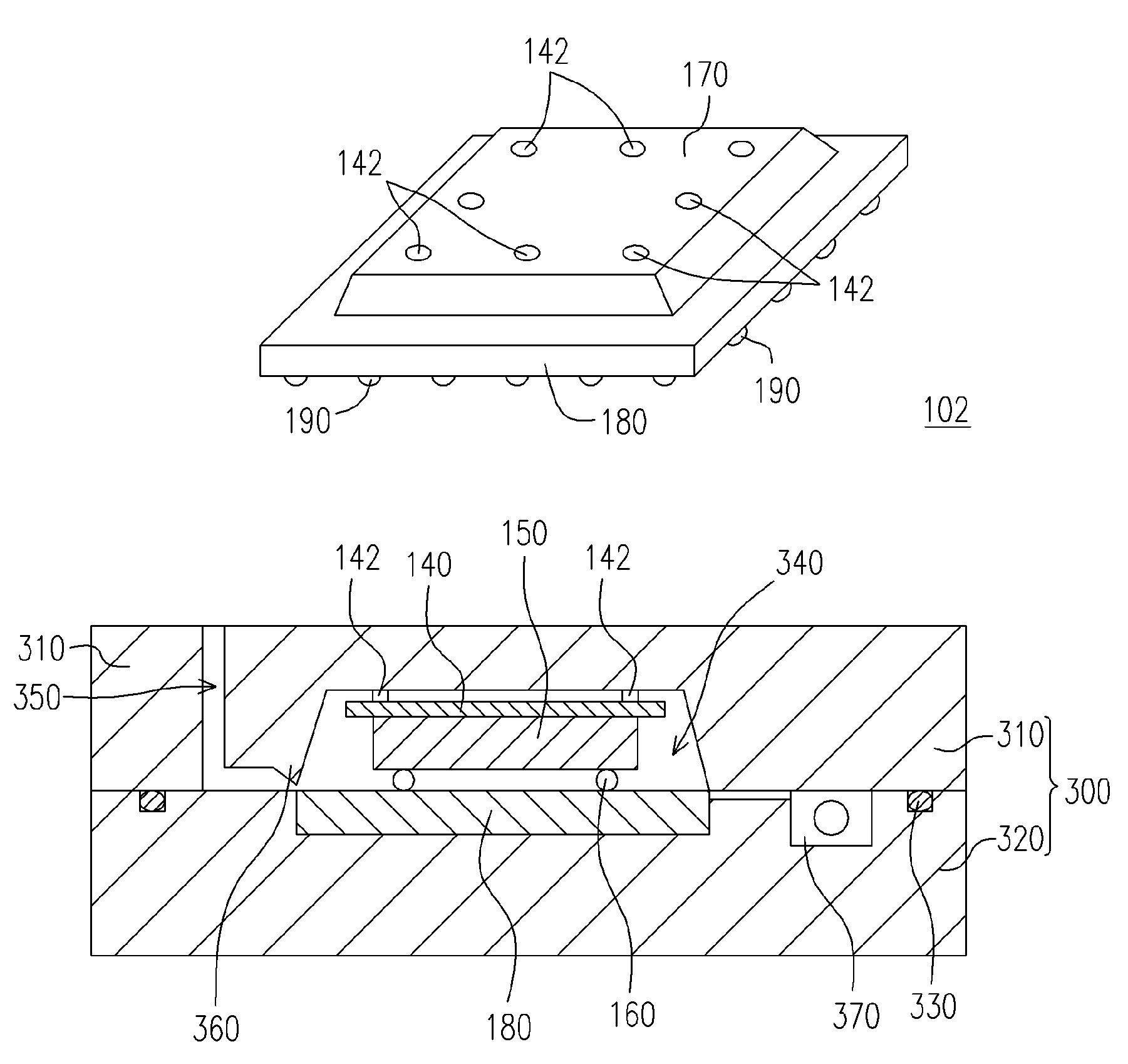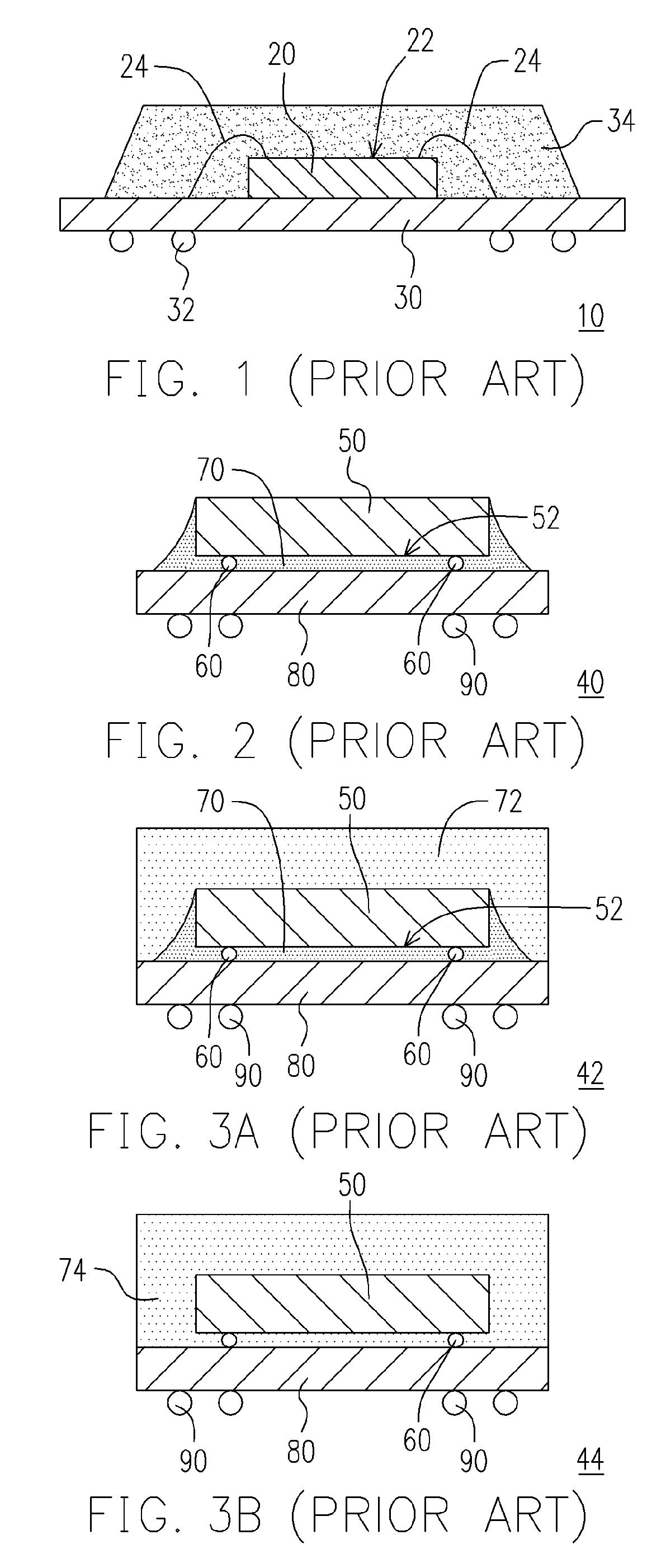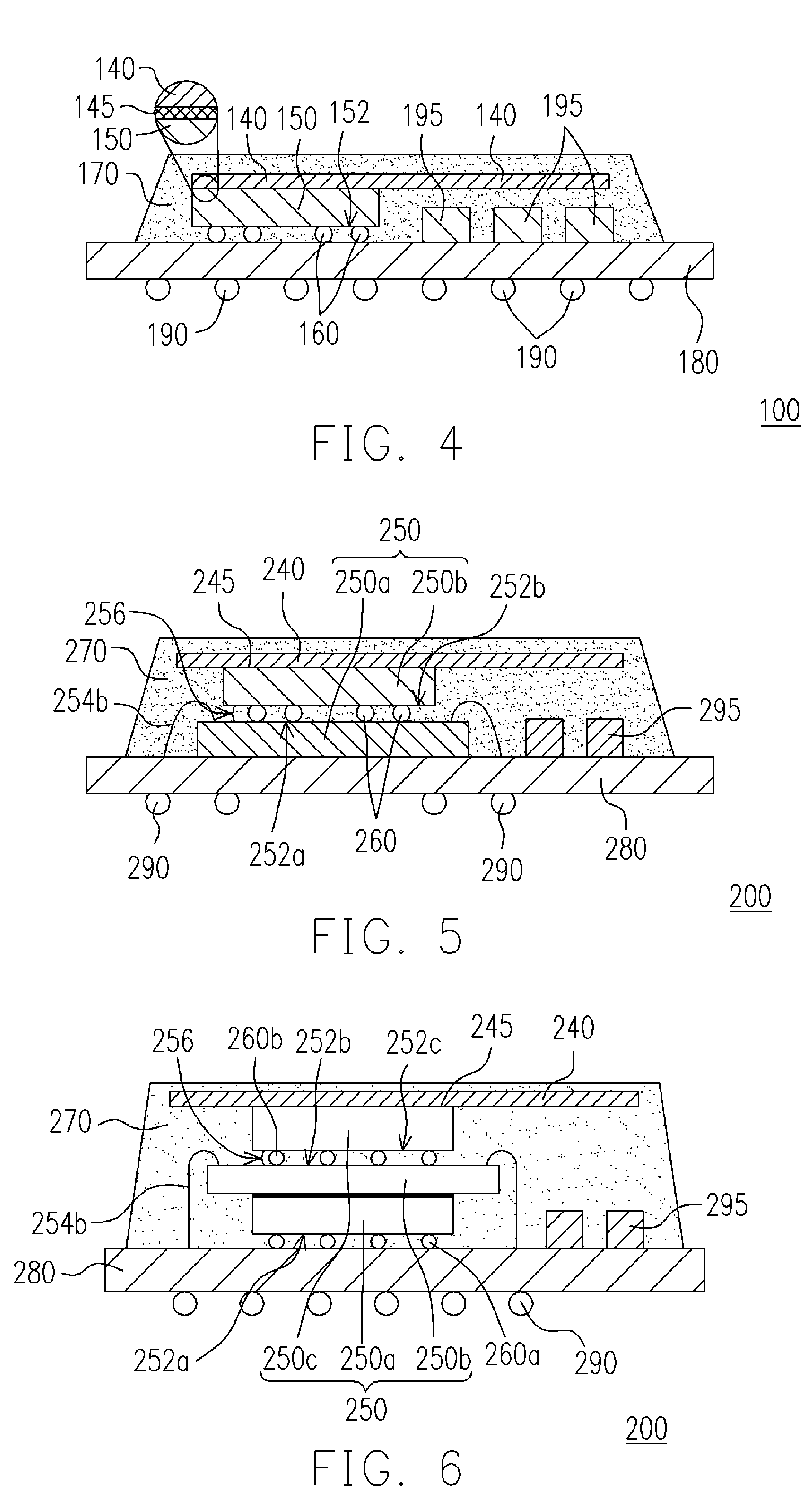Chip package structure
a technology of chip and package, applied in the direction of semiconductor devices, semiconductor/solid-state device details, electrical apparatus, etc., can solve the problems of unsuitable economic mass production methods, large heat dissipation problems of chip manufacturers, and large time consumption of chip bonding materials, etc., to achieve superior electrical performance and high heat dissipation capacity of the package
- Summary
- Abstract
- Description
- Claims
- Application Information
AI Technical Summary
Benefits of technology
Problems solved by technology
Method used
Image
Examples
example 1
[0067]Chips each having a total area 8 mm×8 mm, 800 lead-tin bumps (melting point 183° C., pitch separation 0.25 mm) and a thickness 0.3 mm are set as an array over a FR-5 carrier with an area 35 mm×35 mm, a thickness 0.4 mm. To provide a uniform distribution of current, aluminum wires are set on the surface of the chip. The flip-chip bonding gap is between 50 to 75 μm. A 20 mm×20 mm heat sink with a thickness of about 0.15 mm is fabricated from a copper plate. The heat sink is attached to the carrier using a conventional thermal conductive adhesive material. To increase the bonding strength, the upper and lower surface of the copper heat sink is roughened. A set of transfer molding equipment with reduced-pressure molding capability is used for performing the reduced-pressure molding process. The pressure inside the mold cavity is reduced to an almost vacuum state of 1 mm-Hg during the molding process. The encapsulating material is comprised of CV8700F2 (having a maximum particle di...
example 2
[0068]Aside from changing the package thickness in example 1 to 0.6 mm, other aspects are the same so that a device as shown in FIG. 4 is formed. The thickness of the encapsulating material layer above the heat sink in a section through the device is between 0.08˜0.11 mm.
example 3
[0069]Aside from using a 0.2 mm aluminum plate to replace the 0.15 mm copper plate in example 1, other aspects are the same so that a device as shown in FIG. 4 is formed. The thickness of the encapsulating material layer above the heat sink in a section through the device is between 0.06˜0.10 mm.
PUM
 Login to View More
Login to View More Abstract
Description
Claims
Application Information
 Login to View More
Login to View More - R&D
- Intellectual Property
- Life Sciences
- Materials
- Tech Scout
- Unparalleled Data Quality
- Higher Quality Content
- 60% Fewer Hallucinations
Browse by: Latest US Patents, China's latest patents, Technical Efficacy Thesaurus, Application Domain, Technology Topic, Popular Technical Reports.
© 2025 PatSnap. All rights reserved.Legal|Privacy policy|Modern Slavery Act Transparency Statement|Sitemap|About US| Contact US: help@patsnap.com



